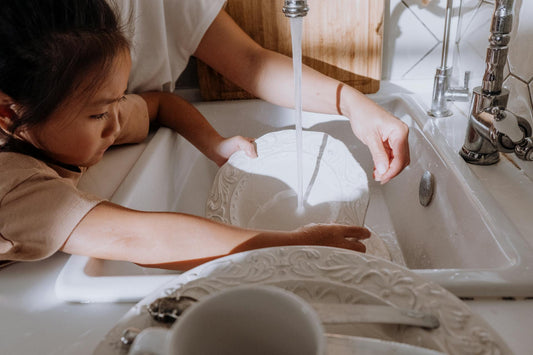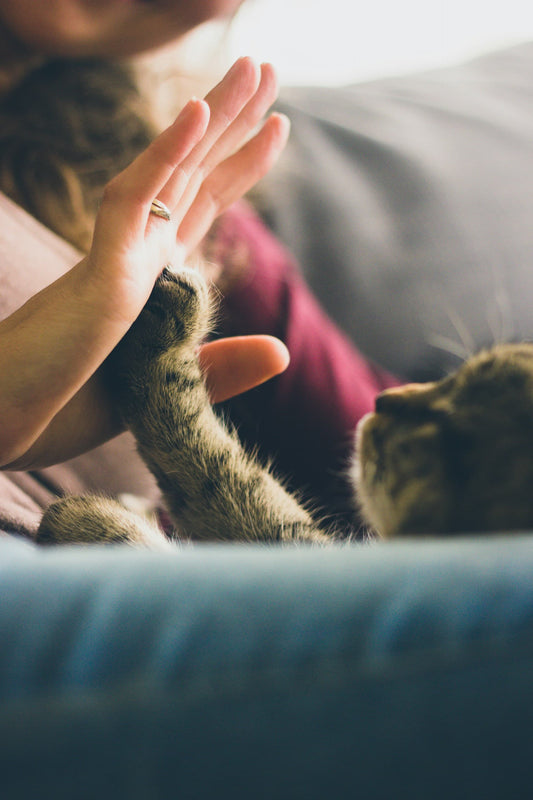
How to Effectively Remove Oil and Grease Stains from Dishes
David & MaryShare
Ever had trouble removing oil or grease stains from dishes or pans after cooking? Oil and grease stains on dishes and cookware are common problems in households. Removing these stains not only ensures your dishes are spotless but also helps maintain hygiene in your kitchen. Today, David & Mary will share effective methods to remove oil and grease stains from dishes and cookware.
Why Oil and Grease Stains Are Difficult to Clean
It's well-known among those who cook or eat at home that oil and grease stains are tough to remove. Scientifically speaking, the difficulty lies in the molecular structure of fats. Fat molecules are long chains that are hydrophobic (water-repellent) and lipophilic (oil-attracting), meaning they don’t dissolve in water easily. This property allows fats to adhere to surfaces and resist being washed away by cold water. Therefore, when oil or grease stains stick to cookware, we need special techniques to clean them effectively.
3 Effective Methods to Remove Oil and Grease Stains
As previously mentioned, due to the hydrophobic nature of fat molecules, special techniques are required to clean these stains from dishes and cookware. Here are three effective methods:
1. Pre-Soaking Cookware
We recommend pre-soaking dishes or cookware with oil or grease stains in water mixed with dishwashing liquid. This technique helps to dissolve the grease, making it easier to clean the dishes and cookware.
2. Using Hot Water
Oil and grease stains are no match for hot water. The heat energy in hot water increases the movement of fat molecules. The more the fats are exposed to hot water, the more the heat causes the fat molecules to move. This movement helps to break down the cohesion of the fat molecules, reducing their viscosity, and making them more soluble in water. As a result, oil and grease stains can be effectively washed away from dishes and cookware.
3. Using Dishwashing Liquid (Especially David & Mary’s Gentle, Fragrant, and Effective Dishwashing Liquid)
Using dishwashing liquid is a solution for effectively removing oil and grease stains from cookware. This is because dishwashing liquids contain surfactants. David & Mary would like to explain further:
Surfactants
Surfactants are molecules with both hydrophilic (water-attracting) and hydrophobic (water-repellent) ends. The hydrophobic end binds to oils and fats, while the hydrophilic end binds to water. This allows surfactants to emulsify oils and fats, breaking them down into smaller particles that can be washed away with water.
Types of Surfactants
Surfactants come in various types. Common dishwashing liquids often use Sodium Lauryl Sulfate (SLS) or Sodium Laureth Sulfate (SLES). These surfactants reduce the surface tension of water, allowing it to mix with oils and fats more effectively. However, the downside of SLS and SLES is that they can cause dry and irritated skin.
At David & Mary, we prioritise health and safety for a happy home. Therefore, we do not use SLS or SLES to protect your skin. Instead, we choose Lauryl Glucoside, a naturally derived surfactant that is both highly effective in cleaning and gentle on the skin. Lauryl Glucoside is biodegradable and environmentally friendly.
Removing oil and grease stains from dishes is not difficult if you use an effective dishwashing liquid and follow the correct methods. David & Mary summarize the 3 methods to help you remove oil and grease stains from dishes and cookware. You can also combine these methods for the best results. So remember, for oil stains on dishes:
Soak, Wash in Hot Water, and Sparkle with Dishwashing Liquid (Especially David & Mary’s Gentle, Fragrant, and Effective Dishwashing Liquid :)
Happy cleaning!

